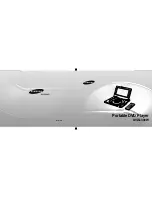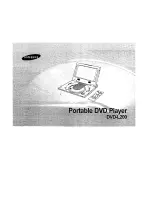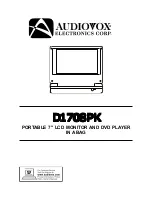
3152B User Manual
Publication No. 980935 Rev. A
5-52 Programming Reference
EADS North America Test and Services
Name
Type
Default
Description
16BIT
Discrete
16BIT
(3100
models)
Arbitrary waveforms are downloaded as 16-bit
(0xFFFF) binary block. Data is sent in byte-high byte-
low order.
12BIT
Discrete
12BIT
(3151B
and
3152B)
Arbitrary waveforms are downloaded as 16-bit
(0xFFFF) binary block. Data is sent in byte-high byte-
low order however, the four least significant digits are
ignored and therefore, data is shifted to the left. For
compatibility issues with the 3152A, the default setting
for this model is 12BIT.
Response
The 3152B returns 16BIT or 12BIT depending on the current format setting.
FORMat:INSTrument {LEGacy|MODern}(?)
HS Syntax: 0189A<0|1>
?
Description
Toggles between legacy and modern operation of the 3152B. Legacy implies that the 3152B behaves exactly
like the 3152A for backward compatibility. This automatically modifies certain parameters to duplicate the
3152A limits. For example: maximum sample clock frequency is limited to 100 MS/s; waveform interlace is
changed to 2, and; waveform vertical resolution is changed to 12 bits. The Modern option removes all
limitations and full performance is available. Note: In FORM:INST LEG mode, if the external sample clock is
used, the resultant frequency will be 50% of what would be expected using a legacy 3152A. To eliminate this
problem, switch to FORM:INST MOD mode.
Parameters
Name
Type
Default
Description
LEGacy
Discrete
LEG
(3152B)
This is the default setting if you ordered the 3152B. You
may still modify the format to modern to restore full
performance.
MODern
Discrete
MOD
(3100
models)
This is the default position if you ordered the 3100M/R-
3152B. 3152A legacy compatibility is available by
switching to FORM:INST LEG.
Response
The 3152B returns LEG or MOD depending on the current compatibility mode setting.
FORMat:BORDer {NORMal|SWAPped}(?)
HS Syntax:
0101A<0|1>?
Description
Binary data is sent to the instrument in byte-high, byte-low order. For convenience, programmers can write
their code in reverse order but have to let the instrument know that the data is reversed. In case the code
stores the data in byte-low, byte-high order, use the FORM:BORD SWAP command to reverse the byte order.
Name
Type
Default
Description
NORMal
Discrete
NORM
Binary data is sent in byte-high, byte-low order
SWAPped
Discrete
Binary data is sent in byte-low, byte-high order
Artisan Technology Group - Quality Instrumentation ... Guaranteed | (888) 88-SOURCE | www.artisantg.com















































